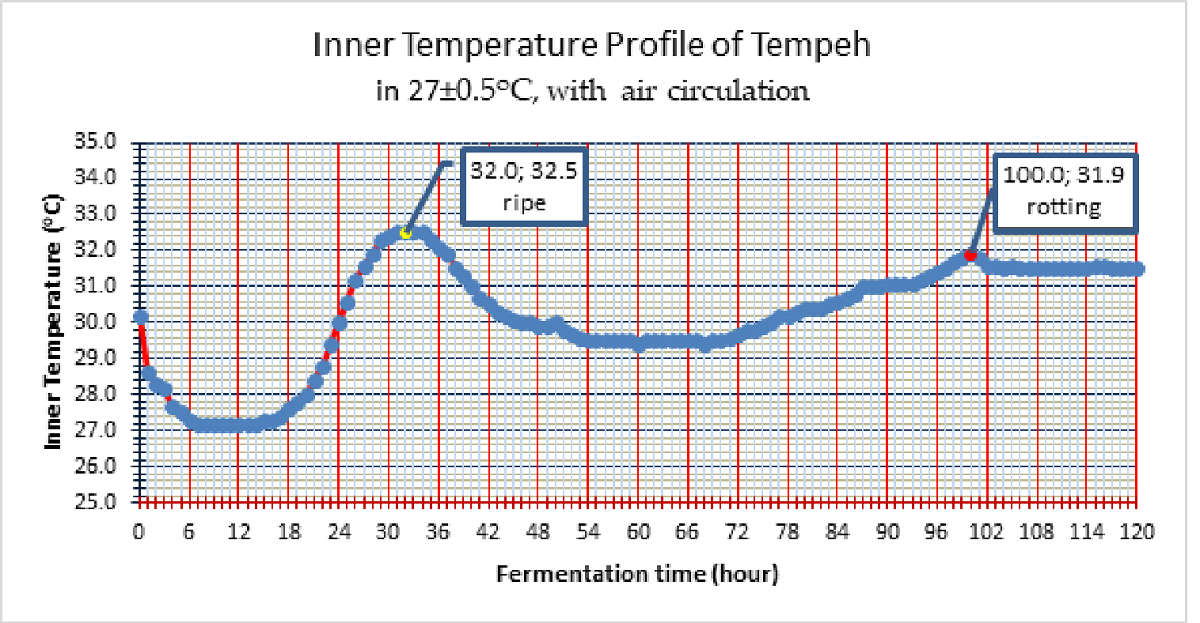Tempeh is an Indonesian traditional food, made from white soybean seeds by fermentation with Rhizopus mold. Soybean seeds content high isoflavone glycosides. Isoflavones can act as phytoestrogen, antioxidant and improves memory. Isoflavone glycosides are poorly absorbed in the human body, but the aglycone isoflavones absorbed quickly. Rhizopus mold hydrolize isoflavone glycosides to be aglycone isoflavones during tempeh production. This research was aimed to know the best room temperature and time of fermentation for making soybean tempeh with high content of isoflavones. After rinsing and boiling, the soybean seeds than fermented with Rhizopus oligosporus. Three conditions were applied: (a) ambient temperature (27-32oC) without air circulation, (b) 27±0.5 oC, and (c) 30±0.5 oC both with air circulations. Inner temperature of tempeh was recorded hourly. Total isoflavones were measured with UV spectrophotometer every 6 hours. Based on this study, fermentation at (a) condition caused the tempeh too hot and rotted quickly. Fermentation at (b) and (c) conditions produced tempeh with good quality. Tempeh ripening was reached between 32-32 hours with inner temperature 32-33oC. Fermentation for 72 hours at condition (b) was chosen because its high total isoflavones content (0.089% w/w), but decrease about 20% compare to soybean seeds (0.112% w/w).

